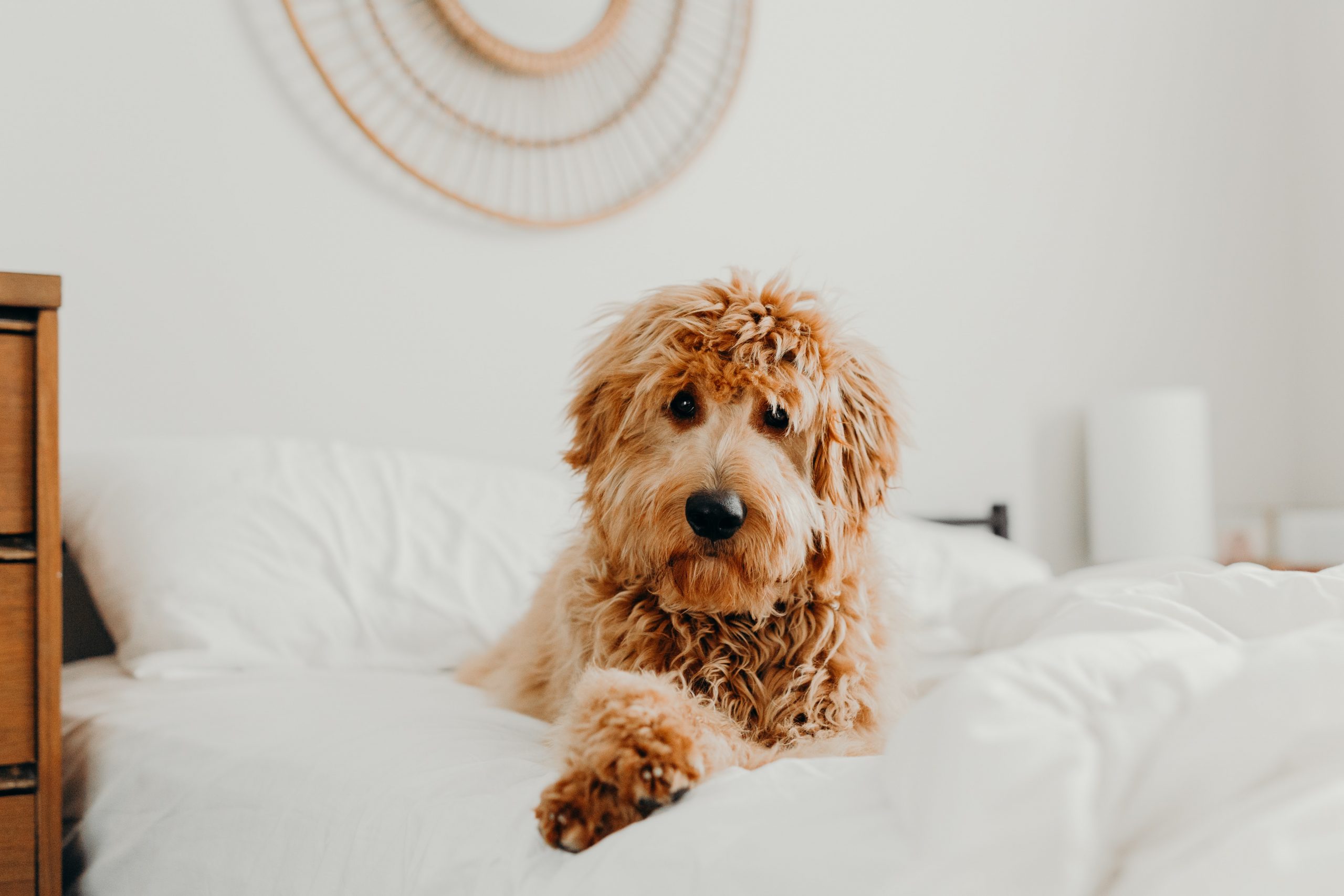Imagine you walk into a dog breeder’s home, and you spot two Golden Doodle buddies — which one are you choosing?
My guess: If you’re like most people, you’ll probably go for the cuter one. And who can blame you? Of course, both are cute, but clearly, one is cuter.
More like choosing between a snapback and a baseball cap. Clearly, both are cool, but fashionistas know snapbacks are king (sorry, baseball fans).
By the way, you’ll be wrong to select a Golden Doodle based on the outward appearance only.
Why? Someone might ask.
And I say: Weren’t you taught not to judge a book by its cover? Open the pages first to know what you’re getting into. In a similar fashion, let’s open the Golden Doodle dictionary to see which of F1 and F1B generation you should buy.
What is the meaning of F1?
Both “F1” and “F1B” Golden Doodle carry the term F1. So, what does this really mean?
For starters, the letter ‘F’ is a short form of the word “filial,” and that tells you that the dog is not purebred but rather a crossbred (sorry, purists). In the case of Golden Doodles, the mix is between a Golden Retriever and a Poodle.
The number “1” stands for “first generation.” And it’s telling you that this is a dog bred specifically from two different parent breeds.
The extra letter “B” in “F1B” stands for “backcross.” It means that the dog is a cross between an F1 Golden Doodle and a purebred parent breed.
So, what is an F1 Golden Doodle?
When you see a dog with the tag F1 Golden Doodle, it simply means that the dog is a hybrid first-generation offspring between a Golden Retriever and a Poodle. That is, it carries 50% genes of Poodles and 50% genes of Retrievers.
And what is an F1B Golden Doodle?
In most cases, a dog with the tag F1B has been bred from crossing an F1 dog (50% Golden Retriever and 50% Poodle) with a 100% Poodle. Therefore, such a dog contains 75% Poodle genes and only 25% Retriever genes.
Question of the Day: Why do most breeders prefer Poodles in the backcross and not Retrievers?
Answer: Because of their superior hypoallergenic and non-shedding properties.
F1 vs. F1B Golden Doodles: How To Make a Choice
1. Choosing based on appearance
Both F1 and F1B generations are quite similar at first glance. However, the first noticeable difference stems from their coat types and sizes.
Naturally, F1 Doodles’ coat type can either be straight, curly or wavy. When you first see them at the pup stage, you might fall in love with their curly coats and, because of that, choose them. But you’d be surprised to see them shedding that cute-looking coat and growing straight-looking coat as they grow older.
In contrast, F1B Doodles can only ever wear two coat types: wavy or curly. Never straight. And this is because they carry higher Poodle genes.
Therefore, if you need a dog that will maintain its beautiful curly or wavy coat over time, F1B should be your choice.
2. Choosing based on size
Any day and any time, some people will always choose small dogs over big dogs. If you’re one such person, then it is important that you know how big your Golden Doodle puppy will grow up to be.
If you get an F1 Doodle, it might be difficult to predict the eventual size of your dog. This is because nobody knows which parent (Poodle or Retriever) the dog will take after in terms of its growth pattern.
In contrast, if you get an F1B Doodle, you can easily predict the dog’s size in the future since you know which parent has the predominant genes.
By and large, if you’re so concerned about your dog becoming too big or too small in the future, go for a generation that allows you to predict future growth.
3. Choosing based on healthiness
The health of the dog is another important point worthy of consideration. And on this note, F1 Doodles represent the better option.
Unlike their backcross counterparts, F1 Doodles possess something called the “hybrid vigor.” And before you scream out loud, let me explain what that is.
Hybrid vigor simply implies that a hybrid dog has combined the vigor (physical strength and good health) of the two parents from which it was bred. Consequently, it means that such a dog will be healthier and more robust than its purebred parent dogs.
In contrast, F1B Doodles do not enjoy much hybrid vigor since their genetic makeup tends more toward one parent (Poodles in this case).
Summarily, if you detest visiting the vet every now and then, the F1 Golden Doodle might be your best bet.
4. Choosing based on shedding tendencies
Shedding refers to a situation whereby a dog loses dead or damaged fur to make room for new, healthy fur.
For many people, this act is nothing short of frustrating, as it leaves a lot of dog hair all around the house and sometimes even on the clothes of owners.
This is why many people pursue breeds like Golden Doodles, which are known for their “no shedding” properties.
In reality, though, the F1 Golden Doodle still sheds a little. But, in contrast, F1B doesn’t shed at all.
5. Choosing based on hypoallergenic properties
When you say something exhibits hypoallergenic properties, it means it is relatively unlikely to cause an allergic reaction.
As far as dogs go, everybody knows their shed fur can provoke allergic reactions in some people. Luckily, since Golden Doodles generally don’t shed, it means they’re hypoallergenic dogs.
On the scale of F1 versus F1B comparison, though, F1B represents the better option for people with moderate to severe allergies. This is because it rarely sheds, and as such, boasts greater hypoallergenic properties.
In contrast, F1 Doodles are less hypoallergenic, which means they are only appropriate for people with mild to no dog allergies.
6. Choosing based on trainability
If your big concern is the ease of training your Golden Doodle, then you should opt for F1B Golden Doodles. F1B Doodles are generally easier to train than their F1 counterparts because of their higher Poodle composition (75%).
As we know them, Poodles enjoy learning tricks, running up and down, playing, hanging out and going for walks, all of which are elements of dog training.
7. Choosing based on temperament
Although Golden Doodles are generally known to be friendly dogs, it’s still important to consider the respective temperament of each generation.
At their core, both are gentle, calm, loving and friendly dogs. However, F1 tends to be the best around strangers or friends and neighbors when they come to visit. This is thanks to their Retriever side. On the other hand, the dominant Poodle genes in F1B make them more nervous and tense around strangers.
















